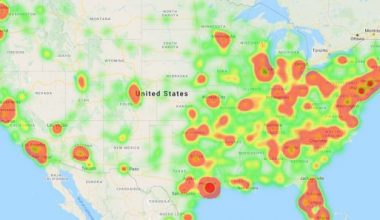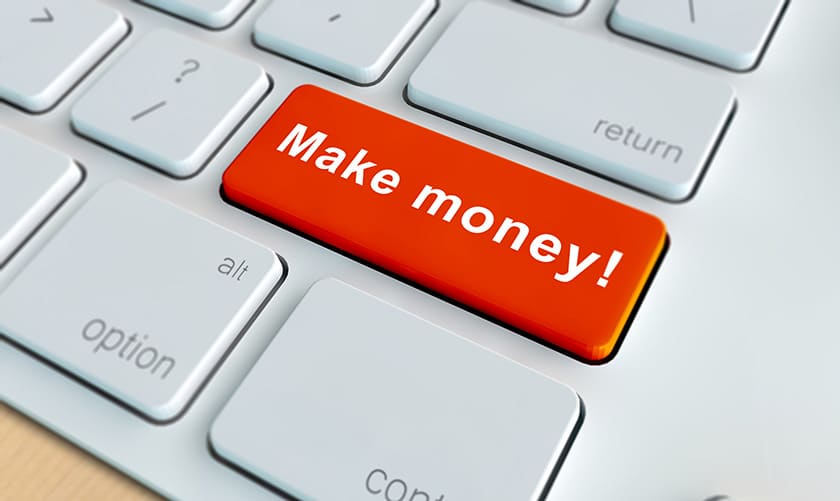Setting up a Facebook company profile can seem like preparing for a space mission with all the possibilities available to you. Yet, it is a good idea to have a presence on Facebook if you wish to conduct business online.
The hype surrounding Facebook, the first social platform to gain popularity among businesses, has decreased as a result of the recent attention on brand-new social networks like TikTok. Yet you still need to be there with 2.91 billion monthly users, 79% of whom are active every day. In this article, we will be discussing the definition, its creation, and how you can set up your own Facebook business page.
What is a Facebook Business Page
A Facebook Business Page is a public profile created for the purpose of self-promotion by companies, organizations, and public people. Consumers may connect with and receive updates from the brands, businesses, and creators they love by following (or “Liking”) Facebook Business Pages.
To use Facebook Commerce and marketing tools, launch a Facebook Shop, and run Facebook advertisements, you must have a Facebook Business Page.
Facebook Business Page Creation
Here are ways you can create your Facebook business page:
#1. Pick or Create a Personal Facebook Account
Facebook profiles and users are different from Facebook Business Pages. These are resources that the Page administrator, a private account, is in charge of managing. There may be multiple administrators for a Page; more on this later.
If you want to completely separate your personal and professional lives, you can either utilize your personal Facebook account or open a new one with your work email address. (Do you recall the holiday party from last year? If not, make sure to keep your accounts distinct.)
Create a Facebook Page after logging in to Facebook with your account. Instead, you can select Page from the Create section by clicking the menu button on the left.
#2. Provide Your Personal Data
Fill in the details about your company. To start a Facebook Business Page, you just need three items, though you can add more later on:
- Name: This is your Page’s title and public name. Your company name suffixes the majority of the time. If another well-known Facebook Business Page or organization already has the same name as you, you might want to add a descriptor so that people can find you more easily, such as “Anny’s Restaurant” rather than just “Anny’s.”
- Category: Start typing a word to define your company, and Facebook will offer suggestions for categories. Choose the option that works best.
- Description/Bio: Your one-sentence summary.” Create a one- or two-sentence synopsis of your company.
#3. Fill in the Information on Your Facebook Business Page
To add more information, such as your business’s hours, website, phone number, and other pertinent information, simply follow the prompts. If you don’t want to provide your phone number or address, leave those fields empty. All of these entries are optional.
#4. Add Profile and Cover Photographs
Your profile and cover photos should have identifiable branding to let your customers know they’ve come to the proper place in addition to adding style to your Facebook Page.
Your logo should be in your profile picture. Go outside the box and add a background color to make it stand out.
Your cover photo might reflect your company generally or can be updated to reflect current specials or occasions.
Your major call to action is the button at the top of your Page. You can connect to services that are only available to businesses, such as online ordering for restaurants, your website, a specific landing page or offer, and more.
How to Activate Facebook Business Page
Below here are also steps to take when activating your Facebook business page:
#1. Avoid Making a Personal Profile for Your Company
Instead of actually creating a Facebook Business Page for their firms, many well-intentioned marketers and business owners instead build personal profiles for their brands. As a result, you lose out on all the content creation tools, paid advertising opportunities, and analytics/insights that come with a Facebook Business Page, which puts you at a severe disadvantage. Also, having a personal profile would make it harder for users to interact with you because they would need to send you a friend request.
Also, avoid creating a second public, “professional” profile linked to your company while you’re doing it. I already have a private personal profile on Facebook, for instance. The practice I’m referring to would be if I made a second, public one under the name “Chizzy HubSpot,” or something similar. Often, people use it to connect with business contacts on Facebook without allowing them to view personal messages or images. Yet, the reality is that producing Facebook’s terms of service prohibit having multiple personal accounts.
#2. Avoid Using Page Roles to Post Mistakes
A marketer’s worst fear, according to the horror stories we’ve all heard about people who unintentionally posted personal stuff to their business’ social media accounts. So, only give Facebook Business Page roles to staff who actually require them for their daily jobs in order to prevent publishing blunders like that. And before you do that, be sure you provide newcomers to social media management enough training so they won’t be perplexed about when to push “publish,” what to post, whether something should be scheduled first, and who to post as.
On your company page, select “Settings,” then select “Page Roles” to allocate them.
Moreover, be sure to share information as your brand and not as yourself when sharing it on behalf of your business. By going to your settings and selecting “Page Credit,” you may verify that.
#3. Provide an Identifying Profile Photo
If you’re a freelancer or consultant, choose a profile photo that’s simple for your audience to recognize, such as a corporate logo for a well-known company, or a headshot of yourself. To be found and liked, especially in Facebook Search, it helps to be identifiable. The image at the top of your Facebook page, the thumbnail that appears next to your postings in people’s feeds, and what appears in search results are all examples. thus make a sensible choice.
Remember while selecting a photo that Facebook constantly modifies its picture dimensions, which you can always discover here. As of the time of publication, desktop Page profile photographs appear at 170×170 pixels and mobile ones at 128×128 pixels.
#4. Choose a Captivating Cover Image
The next step is to choose a captivating cover photo. Make sure you use a high-quality and interesting cover photo for your Facebook page because it occupies the most space above the fold, like this one from MYOB’s Facebook page:
Remember that Facebook Page cover photo proportions are subject to regular revision, just like profile images, therefore we advise keeping an eye on the official recommendations. As of the time of publication, Page cover photographs show up at 640×360 pixels on smartphones and 820×312 pixels on laptops.
#5. Provide an Option with a call-to-action (CTA).
The options available to businesses looking to add call-to-action buttons to their Facebook Pages have greatly increased since Facebook originally introduced the capability in December 2014. These include actions like “Watch Video,” “Sign Up,” and “Book Now,” each of which can be customized with the user’s preferred destination URL or piece of content.
It’s a fantastic approach for marketers to increase the number of people who visit their websites or who view the Facebook material they want to promote. Marketing professionals can use this to direct visitors from their Facebook Business Page to their website. Have a look at how Mandarin Oriental facilitates booking by using the “Book Now” button in this manner.
The CTA you create can then be customized to point visitors to a specific URL or piece of content already present on your Facebook Page. Simply select “View Insights” by using the drop-down arrow on your button to get information on how many people are clicking it.
#6. Add Company Milestones and Basic
We’ve reached the ‘About’ section of your Facebook page, one of its most crucial sections.
Despite the fact that visitors no longer receive a preview of your “About” text when they arrive on your website—instead, they must select the “About” option in the left-hand column next to your content—it is still one of the first places they’ll look when attempting to learn more about your page.
Yet, there are numerous alternatives for a copy to add even within the “About” area. Think about adding succinct, descriptive language to the part that best represents your brand, such as a general description, goal statement, company profile, or story. By doing this, your audience will be able to learn more about your Page before deciding whether or not to Like it.
You could also wish to fill out parts that let you keep track of achievements and honors, like when you introduced highly-liked goods and services, as well as the day/year your business was started or when you had significant events.
#7. Upload Images and Video to Your Timeline
Any internet presence, including social media outlets, now pretty much has to have visual content. After all, compared to other sorts of material, it is 40X more likely to be shared on social media.
While images are a great method to document events and give customers a real glimpse of your company, you should probably devote more time and money to creating videos. The video was identified as the “primary disruptor” in the 2017 State of Inbound report, with 24% of marketers ranking it as a major priority.
#8. Choose the Best Time and Frequency for PPosting
How often and when you post on Facebook should be a key factor in your content strategy. If you don’t update your Facebook Page frequently enough, you won’t come across as trustworthy or genuine. After all, how much trust would you place in a company that hasn’t posted on its page in a few months? Yet if you post too frequently, folks could become tired of seeing your information all over their feeds.
A social media editorial calendar might be especially useful in this situation. It can help you create a plan for when you share specific posts depending on the time of year or overall popularity, much like any other online content. As you’ll want to verify the effectiveness of your updates in your Facebook Insights, you’ll probably need to adjust your calendar a few times, especially in the first stages of setting up your Page (which you can navigate to via the tab at the very top of your page). You can adjust your posting frequency and approach once you’ve noticed the most popular times and other metrics for your first few posts.
#9. Use the Targeting Options on Facebook
You can segment individual page postings on Facebook by gender, relationship status, educational attainment, age, geography, language, and interests to target particular audiences with particular updates.
You can set metrics for a preferred audience as well as one you believe might not want to read your content by simply clicking the small bullseye icon at the bottom of the post you intend to publish.
#10. Pin Significant Posts to the Page’s Top
Older postings are pushed further down your Timeline when you publish fresh content to your Facebook Page. Yet occasionally, even after you make new updates, you might want a certain piece to remain at the top of your website for longer.
Facebook provides the option to “pin” individual posts to the top of your page in order to address this issue. Use pinned posts to advertise things like fresh lead-generation deals, upcoming occasions, or significant product releases.
Is Facebook Business Page Free?
You may expand your presence on and off of Facebook by using the free tool for businesses known as Facebook Pages. Before you start a Facebook business page for your company, remember to: Pages include a number of advantages and features that can be useful to your organization.
Can I Separate my Business Page from my Personal Account on Facebook?
The good news is that you can keep your personal profile and company page separate without taking any additional steps. By default, Facebook treats them as distinct entities. Even though you set up a company page, the two profiles may not actually be connected on the social media platform.
How do I know if my Facebook Page is a Business Page?
You can now see a gray check mark next to your company name on your Facebook profile, indicating that it has been validated.
How Much is Facebook Business Page?
There is no fee for the organic features of your Facebook business page, even if you spend money on Facebook Advertising. Regardless matter how many fans or followers you have, you can create and utilize a Facebook business page for free, just like you can with Facebook profiles and groups.
Can my Facebook friends see my Business Page?
The privacy settings on Facebook allow you to choose who can view your personal profile, but since your Facebook business page is public, anyone can access it.
What Type of Facebook Page Should I Create for my Business?
‘Business Organization or Institution’ or ‘Brand or Product’ will be a better fit for you if you own an internet business or store (more about these types of Facebook pages follow below).
How do I hide my Name on my Facebook Business Page?
Navigate to your Page and select Settings from the menu on the left.
Under the menu in the bottom left, select Page Transparency. To disable Display Verified Page Owner, click the button next to it.
Conclusion
Given that Facebook has close to 2 billion monthly active users, creating a new Facebook Page for your business or simply maximizing an existing one is certainly a wise decision.
Related Articles
- HOW TO MAKE A FACEBOOK BUSINESS PAGE: Step-By-Step Guide
- HOW DOES FACEBOOK PAY WORK: Complete Guide and All You Must Know
- HOW TO MAKE MONEY ON FACEBOOK IN 2023: 13 Proven Ways
- FACEBOOK PAY: What It Is and How to Set It Up.
- HOW TO SELL ON FACEBOOK MARKETPLACE: Detailed Guide
- PAID HOLIDAYS: What is it, How it Works & Law






